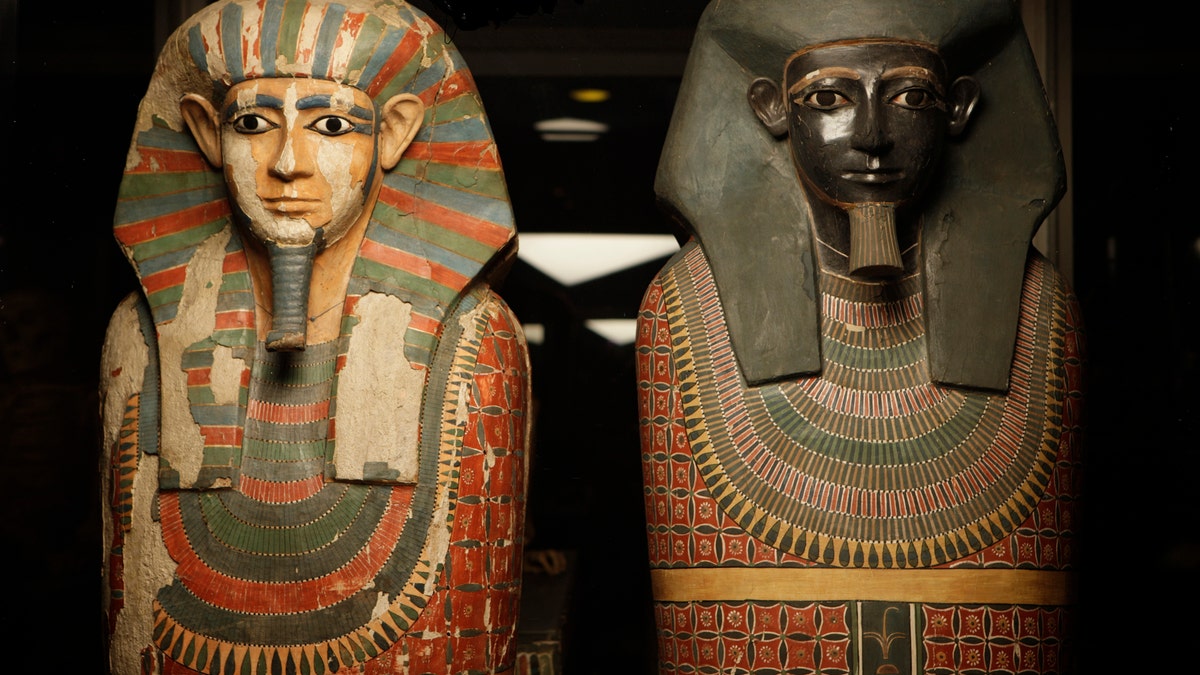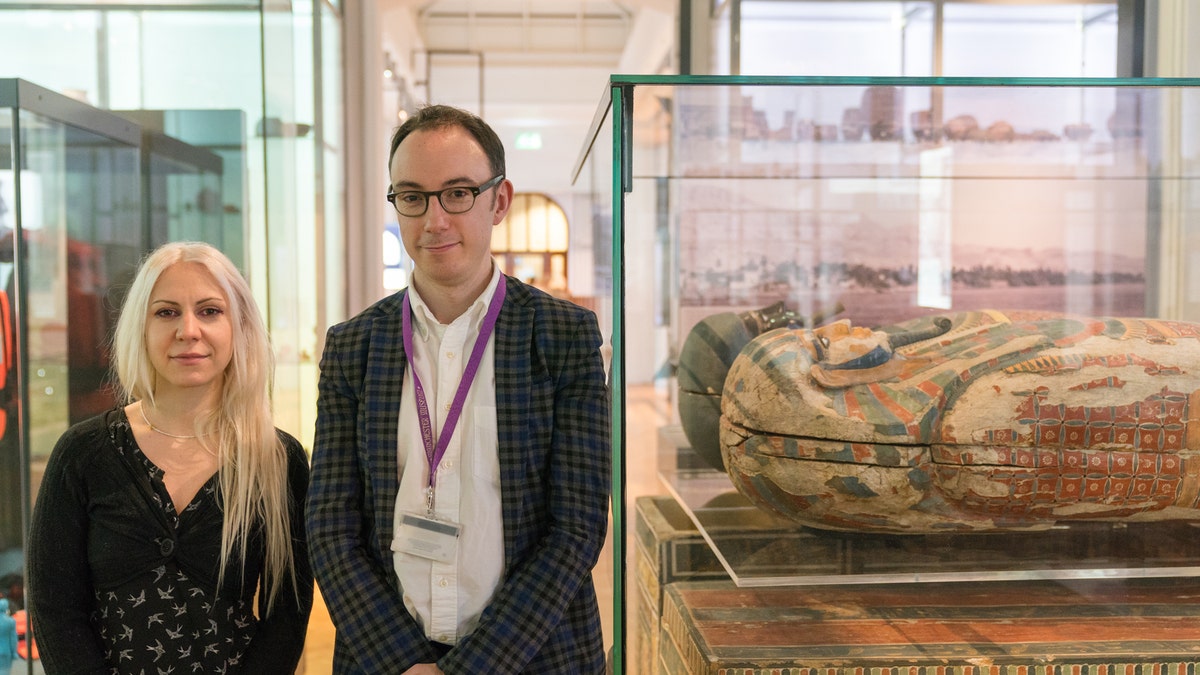
The 'Two Brothers' mummies (The University of Manchester).
Experts at the University of Manchester in the U.K. have solved a 4,000-year-old mystery about a pair of mummies dubbed the 'Two Brothers.'
By harnessing ‘next-generation’ DNA sequencing technology, scientists discovered that the mummies at the Manchester Museum are, in fact, half-brothers. The mummies of Khnum-nakht and Nakht-ankh were discovered in 1907 and date back to around 1800 B.C.
However, Egyptologists have long debated the origins of the two men and questioned whether they were related at all.
DNA DISCOVERY UNRAVELS THE MYSTERY OF EARLY GREEK CIVILIZATIONS
The pair were found at a joint burial site at Deir Rifeh, 250 miles south of Cairo. When they were excavated, archaeologists noted inscriptions on their coffins indicating they were sons of an unnamed local governor. The inscriptions also suggested that the men had mothers with the same name, Khnum-aa.

The 'Two Brothers' mummies (The University of Manchester). (David Gennard)
When the tomb’s contents were shipped to Manchester in 1908, however, archaeologists concluded that the mummies’ different skeletal morphologies were different, suggesting that a family relationship was absent. Based on the evidence of contemporary inscriptions, it was also proposed that one of the Brothers was adopted.
DNA extracted from the mummies’ teeth in 2015, which was revealed this week, has finally resolved the puzzle. Both men belonged to mitochondrial haplotype M1a1, which suggests a maternal genetic relationship. Their Y chromosome sequences were less complete but showed variations between the two mummies, which indicates that they had different fathers, and were thus very likely to have been half-brothers, according to scientists.
DNA FROM ANCIENT PHOENICIAN STUNS SCIENTISTS
“It was a long and exhausting journey to the results but we are finally here, said Dr. Konstantina Drosou, of the School of Earth and Environmental Sciences at the University of Manchester who conducted the DNA sequencing, in a statement. "I am very grateful we were able to add a small but very important piece to the big history puzzle and I am sure the brothers would be very proud of us. These moments are what make us believe in ancient DNA."

Dr. Konstantina Drosou, of the School of Earth and Environmental Sciences and Dr. Campbell Price, Curator of Egypt and Sudan at Manchester Museum (The University of Manchester) (David Gennard)
“Our reconstructions will always be speculative to some extent but to be able to link these two men in this way is an exciting first,” added Dr. Campbell Price, curator of Egypt and Sudan at Manchester Museum.
The results of the study are published in the Journal of Archaeological Science.
TROVE OF STATUES DEPICTING LIONESS GODDESS DISCOVERED IN EGYPT
A number of other projects have harnessed DNA analysis to gain insight into the ancient world. DNA research, for example, is shedding new light on the mysterious ancient Minoan civilization on the island of Crete and their counterparts on the Greek mainland, the Mycenaeans.
In 2016, analysis of the first DNA obtained from an ancient Phoenician revealed that the man had European ancestry, much to scientists’ surprise.
Follow James Rogers on Twitter @jamesjrogers




















